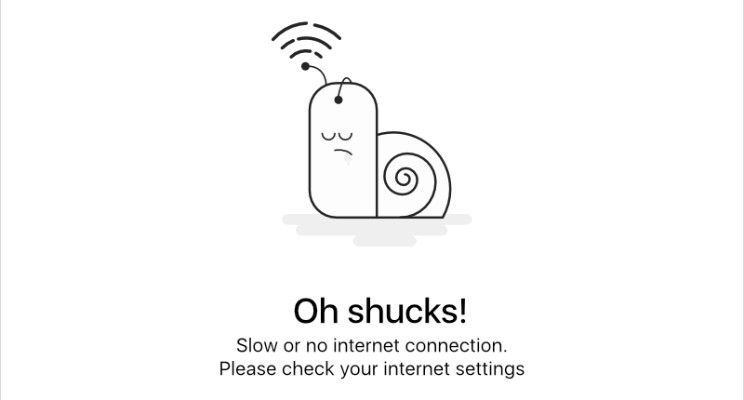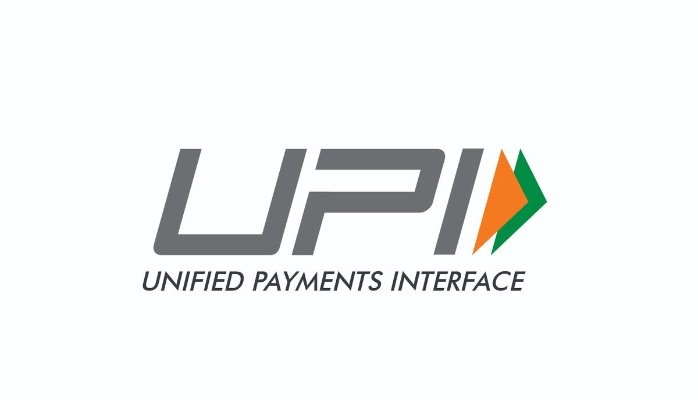The world, it feels, is on self-destruct mode with
everything crashing and burning all around. Matters of great import are being
debated on every social media. It is almost sacrilegious to write about this
frivolous topic. I apologize and urge you to skip reading this and return to
making the world a better place.
If you do persist, first a DISCLAIMER: This post
does not reflect what my employer, my dog, my neighbours or even I think and
are merely the output of my fingers banging away on a keyboard. Your reading
this does not constitute a writer-reader relationship and if you are not the
intended reader, please destroy this and wipe your mind while at it. No
information is guaranteed to be accurate or complete and YOU ACKNOWLEDGE THAT
YOU READ THIS AT YOUR OWN RISK.
You have seen disclaimers like these in every email
and many websites and are intended to protect the sender’s organization. Such
disclaimers have uncertain legal applicability and even if
you did notice them you would almost certainly have ignored them (except in
long email chains with multiple organizations involved, where alternating
disclaimers can form beautiful patterns – if you look carefully and have lots
of time to spare).
Some months ago I happened to notice the disclaimer
in a mail from the GST department acknowledging a routine filing and it piqued
my interest in what Government disclaimers read, and even more on what they
should mean. As these things go, I had some time at the end of the year, a few
weeks ago, and I saw another mail which re-triggered this original interest and
it took me down a rabbit hole.
Let’s start with the #startupindia
website. This site, a part of the Ministry of Commerce and Industry,
list among other things Government Schemes and Regulatory Updates. All good stuff. But then, it
throws in this in its disclaimer section :
Though all efforts have been made to ensure the accuracy of the contents on this portal, the same should not be construed as accurate reproduction of the text for use for any legal purposes. DeitY and NIC accept no responsibility in relation to the accuracy, completeness, usefulness or otherwise, of the contents
The Directorate General of Foreign Trade website also has a similar disclaimer:
Content published on this website have no legal sanctity and are for general reference only.
What does it mean for a Govt website to say that they don’t guarantee the accuracy of information on their site, particularly when they are about their own schemes and policies? Not all Government websites are like this and there are some sane ones. For example, the Law Ministry website has this more sensible disclaimer:
Please note that this page provides links to the websites / webpages of Government Departments/ Organisations.The content of these websites are owned by the respective organisations and they may be contacted for any further information or suggestion.
This clearly makes sense. And you have some disclaimers which one struggles to parse with, like in the motherlode of all Govt websites, that of NIC – see if you can figure out what exactly they are disclaiming:
Disclaimer : This website is designed to disseminate information/activities related to National Informatics Centre, Ministry of Electronics & IT (MeitY).
Emails also have a similarly mixed situation. Take the mail from the Passport Office. It has this disclaimer:
*** This message is intended only for the person or entity to which it is addressed and may contain confidential and/or privileged information. If you have received this message in error, please notify the sender immediately and delete this message from your system ***
Rather plain and simple and while it doesn’t mean much it doesn’t hurt either. The Ministry of Company Affairs has more verbose but essentially the same as the Passport one:
Notice: The information contained in this e-mail message and/or attachments to it may contain confidential or privileged information. If you are not the intended recipient, any dissemination, use, review, distribution, printing or copying of the information contained in this e-mail message and/or attachments to it are strictly prohibited. If you have received this communication in error, please notify us by reply e-mail or telephone and immediately and permanently delete the message and any attachments. Thank you
The Income Tax department has several variants but they are largely brief and don’t say much, except hold out the threat of law:
This e-mail contains privileged and confidential information intended solely for the use of the addressee(s). If you are not the intended recipient, notify us immediately and delete the original message. Further, you are not to copy, disclose, or distribute this e-mail or its contents to any other person and any such actions are unlawful.
The Customs and Excise department kicks things up a notch, by disclaiming any responsibility for the safety of the mail:
The message (including the attachment) in this e-mail is intended solely for the addressee(s) and may be confidential. If you have received this message by mistake, please inform the sender immediately via return e-mail and delete the e-mail. Though all reasonable precautions have been taken to ensure that the message and its attachments are free from Malware, Central Board of Excise and Custom does not accept any responsibility for any loss or damage the use of this e-mail may cause.
A somewhat commercial wing, BESCOM (which is the electricity discom for Bengaluru) sends this in their email:
CAUTION - Disclaimer ******************************************************************************** Any views or opinions presented in this email are solely those of the author and do not necessarily represent those of BESCOM. BESCOM accepts no liability for the content of this email, or for the consequences of any actions taken on the basis of the information provided, unless that information is subsequently confirmed in writing. This e-mail may contain viruses. BESCOM is not liable for any damage you may sustain as a result of any virus in this e-mail. You should carry out your own virus checks before opening the e-mail or attachment. If you are not the intended recipient of this mail, you are notified that disclosing, copying, distributing or taking any action in reliance on the contents of this information is strictly prohibited. Refer www.Bescom.org for detailed e-mail disclaimer of BESCOM.
Someone has definitely copy/pasted this from some unrelated service as this is in the monthly bill that BESCOM sends! Not all are bad or generic and the one from RBI is the most sensible of all the Govt ones that I have received. It has relevant messages instead of generic boilerplate and even the usual one of “if not the intended recipient” requests a notification which is better than the silent delete prescribed by most.
The Reserve Bank of India never sends mails, SMSs or makes calls asking for personal information such as your bank account details, passwords, etc. It never keeps or offers funds to anyone. Please do not respond in any manner to such offers, however official or attractive they may look. Notice: This email and any files transmitted with it are confidential and intended solely for the use of the individual or entity to whom they are addressed. If you are not the intended recipient, any dissemination, use, review, distribution, printing or copying of the information contained in this e-mail message and/or attachments to it are strictly prohibited. If you have received this email by error, please notify us by return e-mail or telephone and immediately and permanently delete the message and any attachments. The recipient should check this email and any attachments for the presence of viruses. The Reserve Bank of India accepts no liability for any damage caused by any virus transmitted by this email.
And then we come to the doozy that sent me originally sent me on this wild goose chase, from the GST department.
It is a system generated acknowledgement and does not require any signature
Disclaimer:
This is a system generated mail for general information purposes only and unless otherwise specifically mentioned therein should not be construed as an acknowledgement, authentication and/or approval of any kind about the correctness of the information/data successfully submitted by you.
Though all efforts have been made to keep the contents of this mail accurate, the same is not intended for and/or should not be construed as a statement of law or used for any legal purposes against GSTN.
The information transmitted as part of this mail is meant only for the intended person/entity only and may contain confidential, proprietary and/or privileged information/material of GSTN. GSTN does not accept or assume any liability of any nature against any person/entity in relation to the accuracy, completeness, usefulness and/or relevance or otherwise of the information as part of this mail.
Any use, reuse, review, retransmission, dissemination, paraphrasing, distribution or other uses of the in formation contained in this mail, through any medium whatsoever, by any person/entity/recipient shall strictly be at their own risks and for any claims/issues in relation thereto GSTN shall not be liable for any expense, losses, damages and/or liability thereof.
If you are not the intended recipient of this mail or information contained therein, please forthwith, contact the sender and delete the material completely from your computer/s and/or the device/s wherein the contents/information of this mail may have been stored.
WARNING:
Computer viruses can be transmitted via email. The recipient should check this email and any attachments for the presence of viruses. Goods And Services Tax Network (GSTN) accepts no liability for any damage caused as a result of any virus or other malware transmitted by this e-mail.
Recipient should carry out own virus checks before opening the e-mail or attachment. E-mail transmission cannot be guaranteed to be secure or error-free as information could be intercepted, corrupted, lost, destroyed, arrive late or incomplete, or contain viruses. The sender therefore does not accept liability for any errors or omissions in the contents of this message, which arise as a result of e-mail transmission
This
email comes in response to the regular GST filing and is in the nature of an
acknowledgement and contains various details, including an Acknowledgement
Reference Number. Now the GST is a system which was designed as digital first –
which means there are no paper acknowledgements needed or generated. This email
is the only acknowledgement that one gets and it shoots itself in the foot by
saying it should not be construed as an acknowledgement. When a paper receipt
or acknowledgement is given they don’t come with such disclaimers. In fact, the
first line says that it does not need a signature as it is system generated
(implying absolute accuracy with no need for a human to validate and authorize)
and yet the rest of the disclaimer undermines that confidence.
This brings me to the basic question of legality of
Government communications. Can (and should) the Govt disclaim responsibility
for accuracy, completeness or legality of their content whether on the website,
email or in other forms? I believe that the current state of this plethora of
disclaimers, with all kinds of things being disclaimed, is due to ignorance,
indifference and perhaps in some cases incompetence rather than any intentional
plan to escape responsibility. These variations possibly arise because the
Government does not have a policy for this. They cover many things in their published policy on Emails but not
disclaimers.
Looking beyond GoI, other governments are not
particularly better, though at least some seem to have made a concerted effort
to tackle this question. A mail from ACRA of Singapore (the equivalent of MCA
here) is not very different:
[This email is computer-generated, please do not reply to this email].
*************************************************************************
This is a system-generated email. Please do not reply to this email.
For more information, please visit our website at www.acra.gov.sg or use our interactive virtual assistant, AskJamie@ACRA.
The UK Govt website T&Cs are very
similar to those of the GoI. But there are others who seem to do a
much better job. Look at this analysis and recommendation from the
Queensland, Australia Government on how their email disclaimers should be
planned.
I believe it is time that these disclaimers,
particularly from the Governments, stop being meaningless boilerplate and start
being relevant, useful and genuinely thought through. We, as users, should do
our bit by not ignoring the junk that keeps getting appended to every email.
DISCLAIMER 🙂 : All the disclaimers cited are from emails received by me personally and YMMV.













